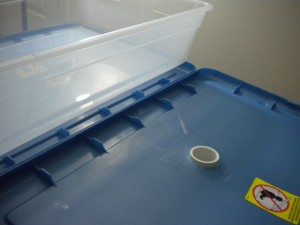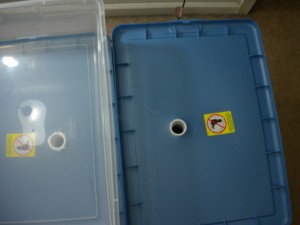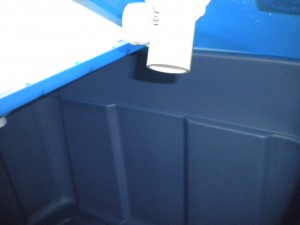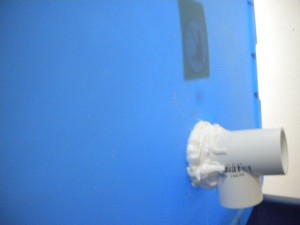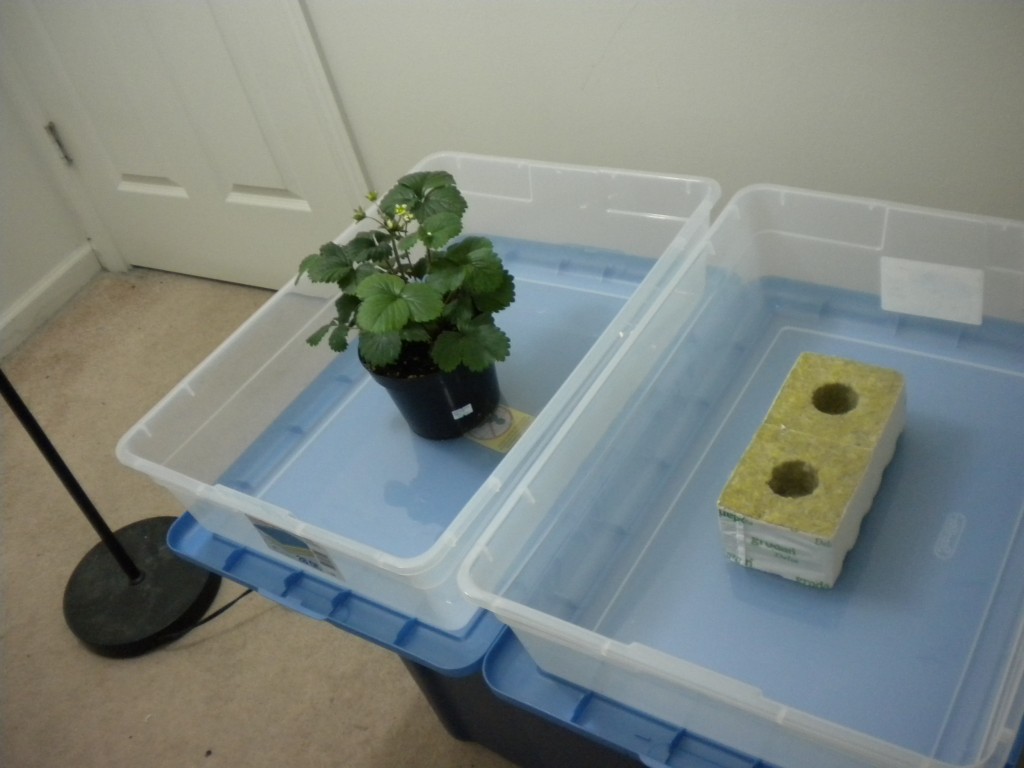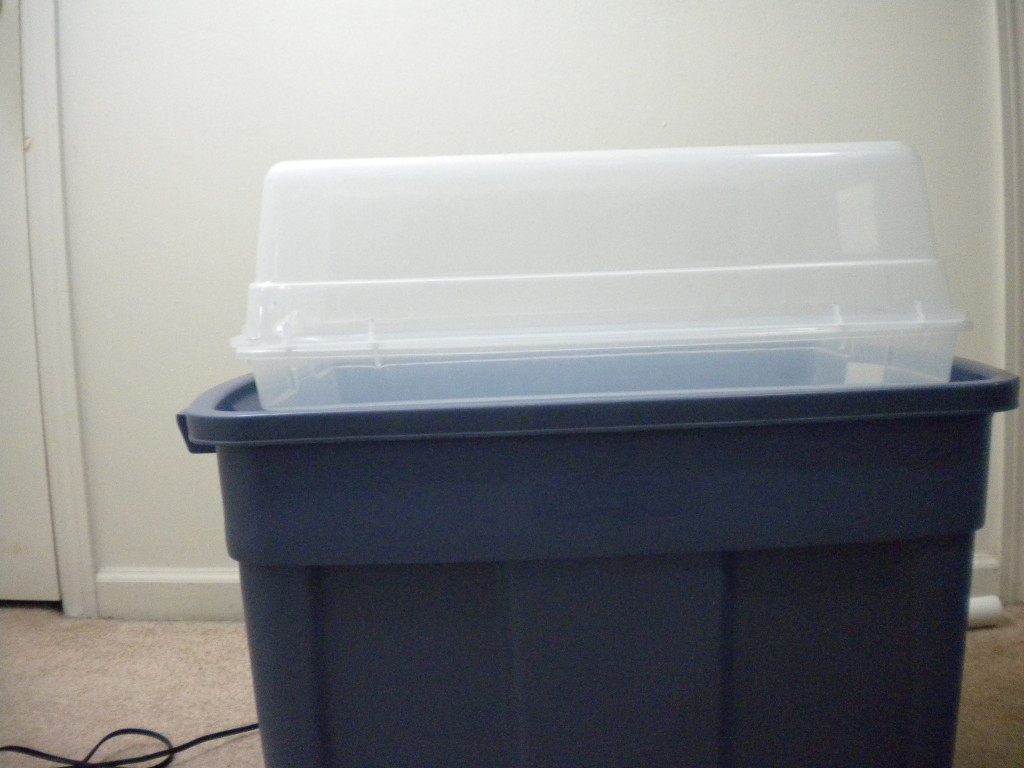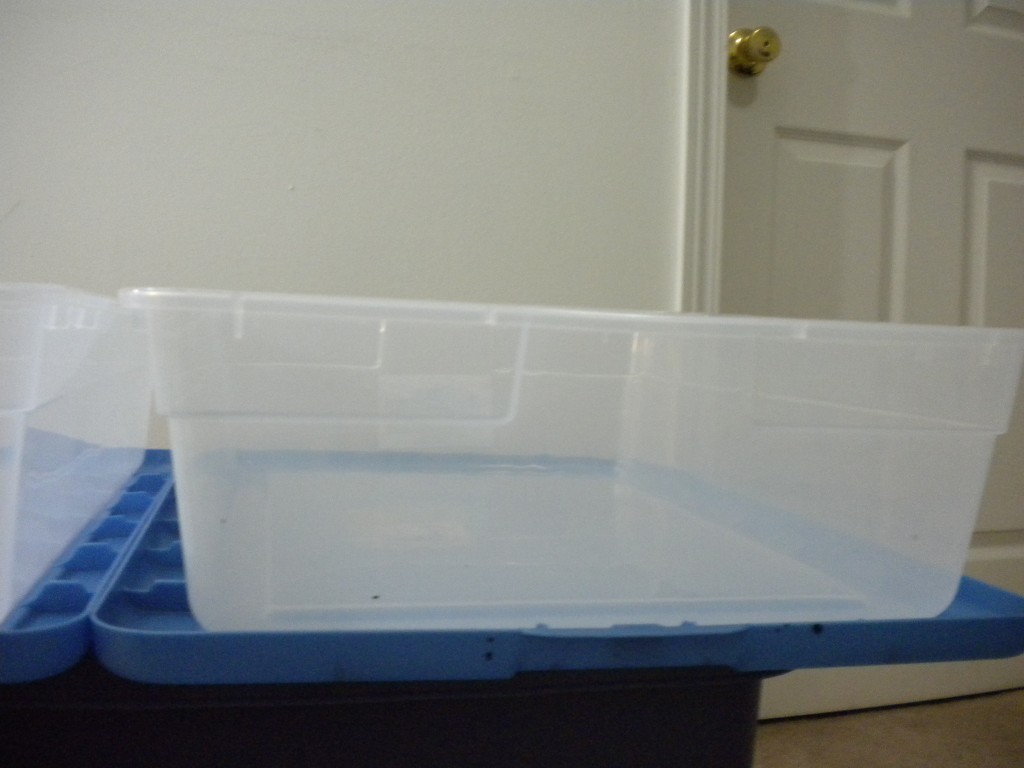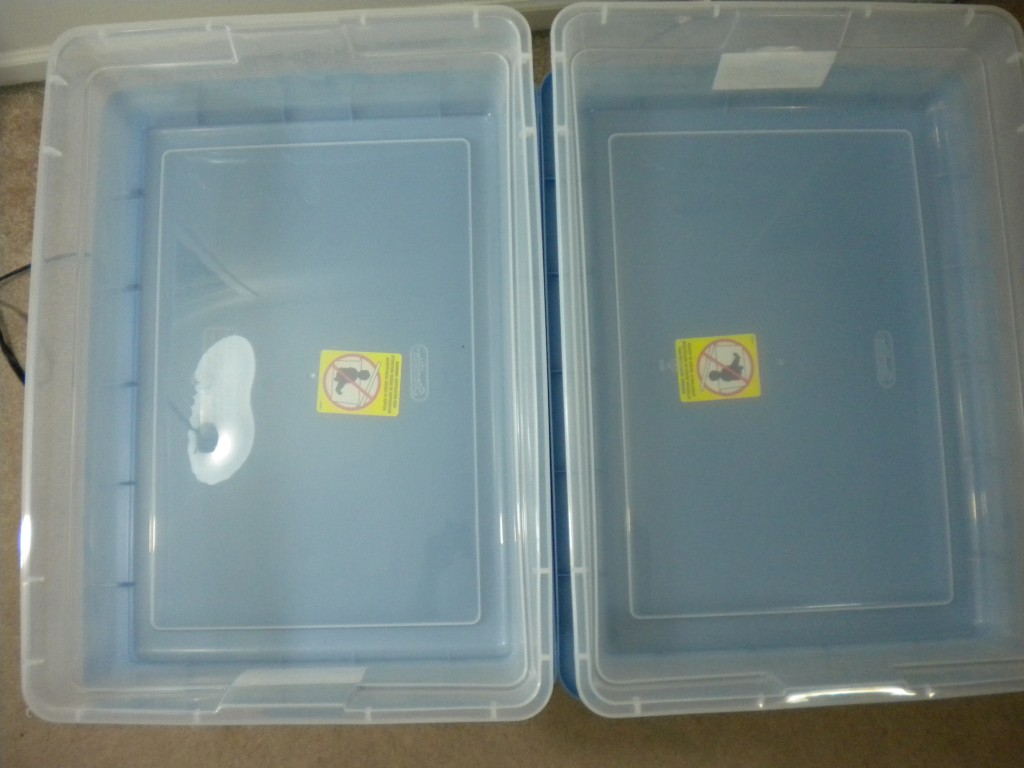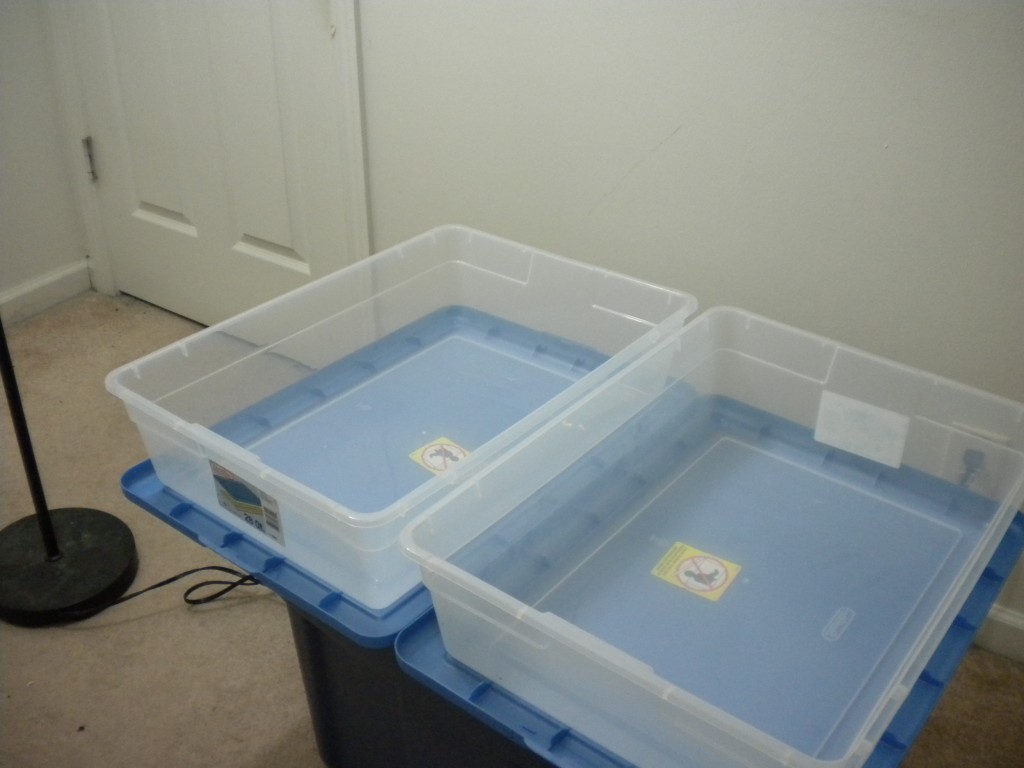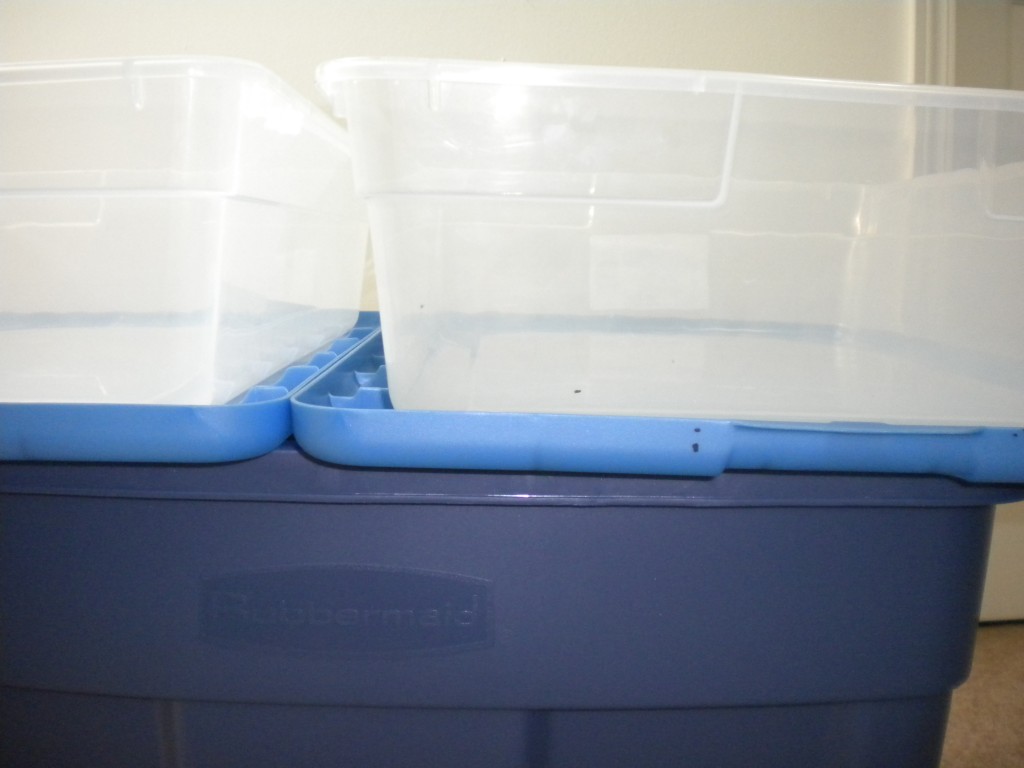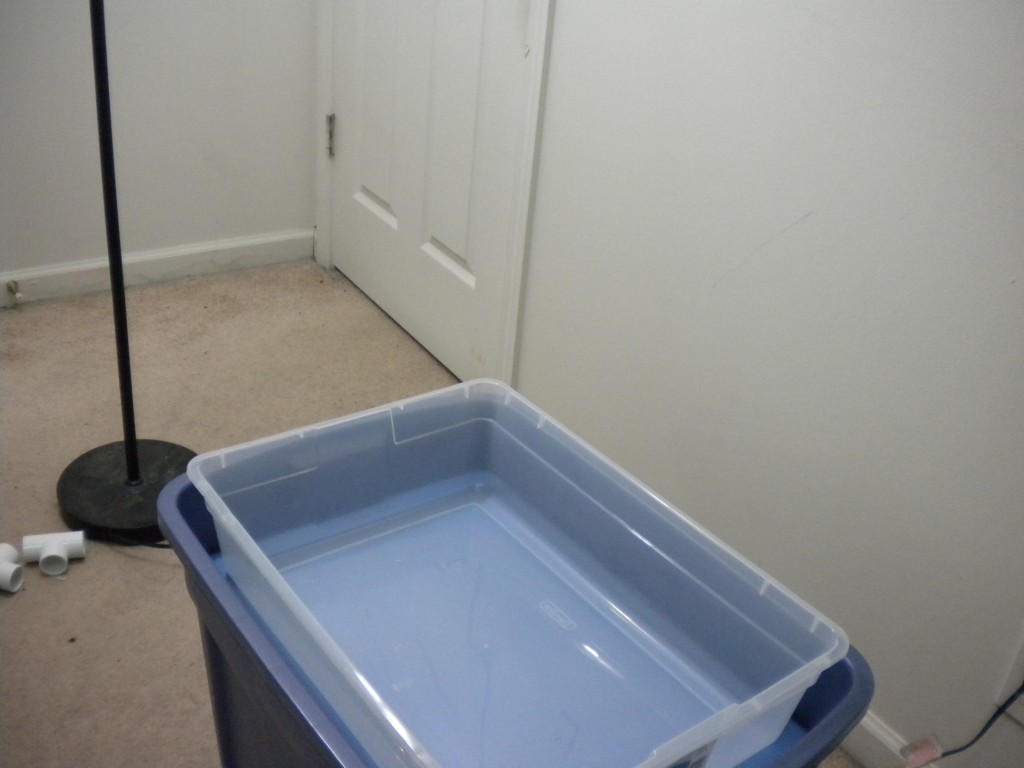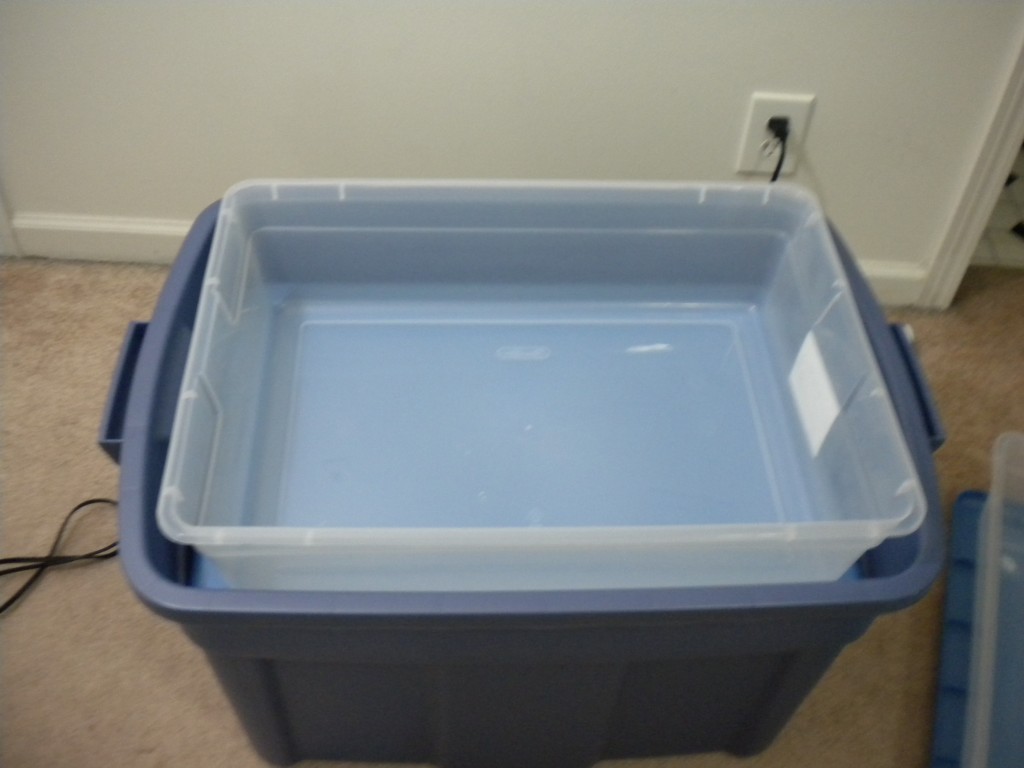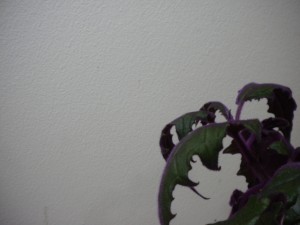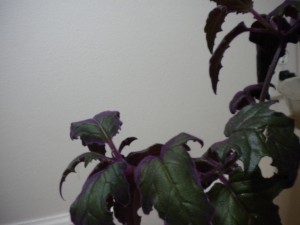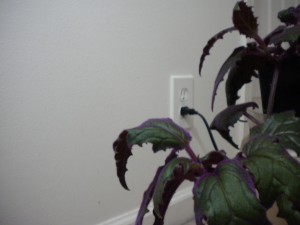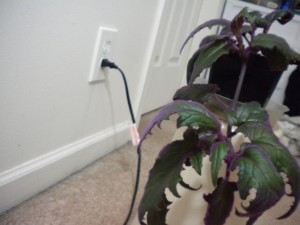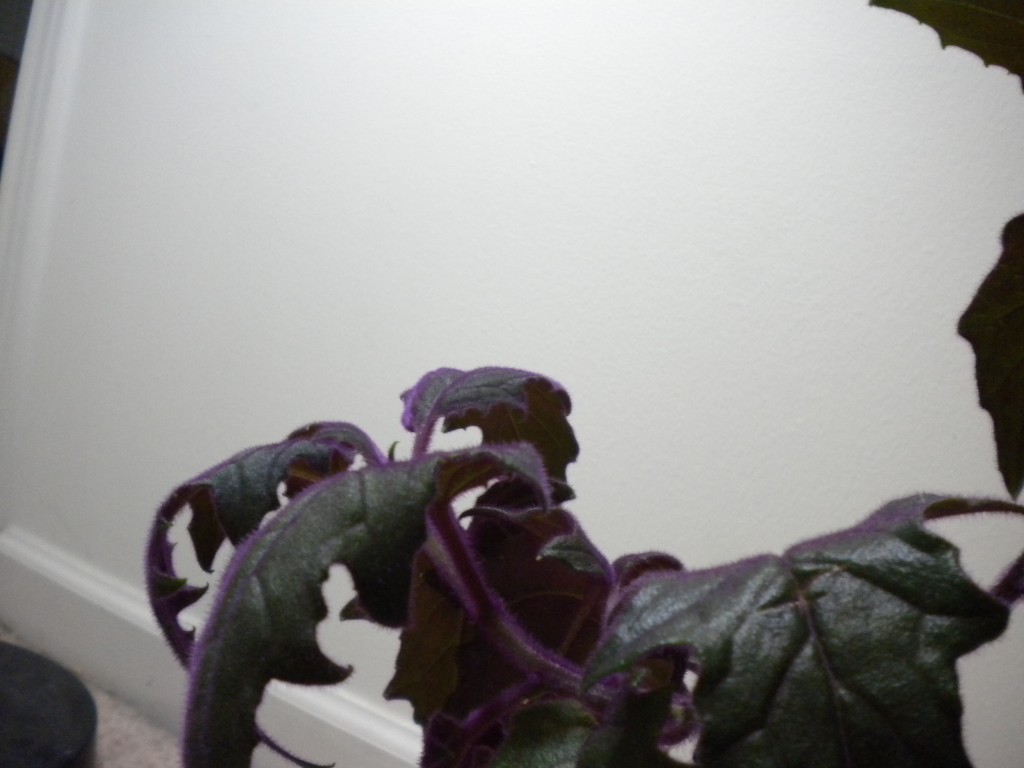This is part 2 of the DIY Drain Table Guide. Look at part one here.
Okay after you have the right size tub and trays for your set up you can get started. The size you get depends on your needs but I recommend getting a really sturdy bottom tub(drain off tub where waste goes). The tub should be able to withstand the pressure of water with out bowing out enough to make your trays fall and CERTAINLY without cracking or breaking.
If a water container you have in one of your hydroponics systems is too weak to withstand the pressure of water constantly pushing on it could crack or break and leak the potential GALLONS of water all over your room and whatever electronics you may have on your floor(Even though all indoor gardeners should be making sure all of their electrical parts are placed on the wall or above where water could potentially spill or spray on them RIGHT?)
You’ll want to use a drill to drill holes 1 or 2 inches wide in the lids of the containers. Position the hole so that they will drain into the tub the lids will be sitting on. Refer to the pictures below.
Notice there is a two inch hole drilled into the lid of the container with a two inch diameter PVC joint connector put through it as a drain hole.
Let the sealant set long enough that its not loose – this could take up to 24 hours so BE PATIENT. Better things come to those who wait. Once the bond is tight you will be able to sit your trays on top of the lids and the drain wont fall off under the pressure of your plants plus extra water.
Position your tray on top of the lid like you will have it in your final set up. You want to put a hole in the space where the PVC hole is so the water from the tray drains out of the hole and through the PVC drain down into the bottom tub/reservoir.
This is pretty much what you’ll have at the end – You can drill holes where the white circles are to drain the clear tray.
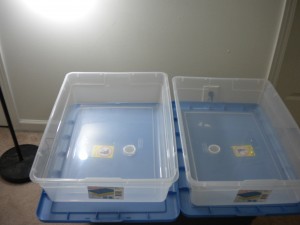
A drill should work fine if you are careful not to crack the plastic. It shouldn’t be a problem either way considering you should be using containers sturdy enough to hold a lot of weight over long periods of time. If one of your containers break your plants could end up submerged in their own dirty waste water. You want to plan and account for things like this in the planning of your hydroponic set ups to ensure safety of equipment, plants, and most importantly you and your house.
Another way to put holes in the plastic trays is to burn a hole. BE VERY CAREFUL WITH THE FIRE! I heated up a glass rod with a camp fire starting torch – one similar to what you use to start a grill. Once the rod was glowing orange I pushed it through where the PVC drains were to make a perfect hole.
Good luck in your constructions and please comment or contact me with any questions.
